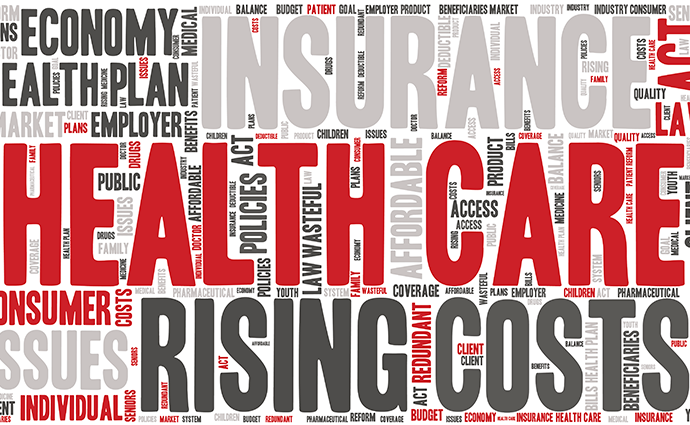Average Healthcare Costs for Outpatient Visit Nears $500
At the same time, average healthcare costs per inpatient admission were more than $22,000, according to a new analysis.

Source: Thinkstock
- Healthcare spending growth may be slowing, but healthcare costs in the US still significantly outpace those of other nations, a new analysis shows.
As part of a larger study to determine the funding and services needed to achieve universal health coverage (UHC) in every country, researchers from the Institute for Health Metrics and Evaluation (IHME) at the University of Washington found that the average outpatient visit cost nearly $500 in 2016.
And the average inpatient stay in the US was over $22,000, the study recently published in The Lancet Public Health also revealed.
“Both of these dollar amounts underscore a common understanding in the health profession: The US exceeds every other nation in total healthcare costs,” the IHME stated in a press release.
The US consistently had the highest healthcare costs for inpatient and outpatient services.
READ MORE: How Addressing Social Determinants of Health Cuts Healthcare Costs
Outpatient costs ranged from $2 in Burundi, Eritrea, and the Central African Republic to $478 in the US, while costs per inpatient admission ranged from $87 in the Central African Republic to $22,543 in the US.
The US even had significantly higher healthcare costs compared to other high-income countries.
For example, average outpatient costs were $76 in Japan, $157 in Canada, $170 in France, $243 in the United Kingdom, $312 in the Netherlands, and $398 in Switzerland.
Similarly, the US ranked the highest in terms of inpatient costs. In similar countries, average costs per inpatient admission were $6,050 in Germany, $6,576 in France, $9,037 in the United Kingdom, $10,103 in Canada, $10,335 in Japan, and $12,412 in Switzerland.
The US is known for its high healthcare costs. Policymakers and healthcare leaders are focused on reducing healthcare expenditures across the entire system through a wide range of reforms, including a new payment system for Medicare providers, value-based reimbursement programs, and administrative simplification initiatives.
READ MORE: 3 Strategies to Decrease Low-Value Care, Healthcare Costs
And their efforts have started to pay off. Actuaries at CMS recently reported that healthcare spending in 2017 grew at a rate of 3.9 percent, down from 4.8 percent in 2016 and 5.8 percent in 2015.
The healthcare spending growth rate slowed for the second consecutive year to rates observed from 2008 to 2013, otherwise known as the post-Great Recession period.
“Prior to the coverage expansions and temporary high growth in prescription drug spending during that same period, health spending was growing at historically low rates,” stated Anne Martin, an economist in the Office of the Actuary at CMS. “In 2017, healthcare spending growth returned to these lower rates and the health spending share of GDP stabilized for the first time since 2013.”
The healthcare spending portion of the GDP stabilized at about 17.9 percent in 2017, down slightly from 18 percent the previous year.
Healthcare spending growth may be slowing, but healthcare costs are still high. And medical prices may be to blame. CMS actuaries reported that medical price growth accelerated in 2017, increasing to 1.6 percent from 1.3 percent the year prior.
READ MORE: Addressing Prices, Use at Local Level to Lower Healthcare Costs
Researchers from Harvard University and London School of Economics and Political Science (LSE) also cited high prices as the primary driver behind excessive healthcare costs in the US. The study, published in JAMA in March 2018, found prices were significantly higher in the US compared to other high-income countries, like Japan, Sweden, the United Kingdom, and Switzerland.
“Prices of services were not examined directly, but US healthcare spending was found to be higher than in other countries despite similar utilization patterns, suggesting that higher prices were the primary cause of high healthcare spending in the United States relative to other nations,” researchers wrote.
The Harvard and LSE researchers suggested that policy efforts currently in effect may not be targeting the right driver of healthcare costs. Shifting policy efforts to focus on price control rather than delivery system reform may help to lower healthcare costs closer to the rates used in similar countries.
CMS is currently experimenting with a healthcare price transparency requirement in an effort to lower costs. In 2019, the federal agency will require hospitals to publish a list of their standard charges online.
The head of the agency, Seema Verma, said the requirement is “just the beginning of our plan to move to a value-based system and as we make this transition, our administration is empowering patients because patients should be at the center of cost and quality decisions and have the information they need to make decisions for themselves and their families.”
The requirement could also spur competition among hospitals, resulting in lower prices.
Increased competition is key to lowering healthcare prices, a trio of industry experts from Heinz College, the Brookings Institution, and Aledade explained in a 2017 paper.
“Prices are high and vary in seemingly incoherent ways, yet quality of care is uneven, and the system lacks the innovation and dynamism that characterizes much of the rest of our economy,” they wrote. “The dearth of competition in our healthcare markets is a key reason for this dysfunction.”
Changing reimbursement policies that promote consolidation, like certain value-based reimbursement models, should help boost competition, they added. Additionally, stakeholders should consider simplifying administrative and regulatory requirements to slow healthcare mergers and increase healthcare quality and price transparency.
